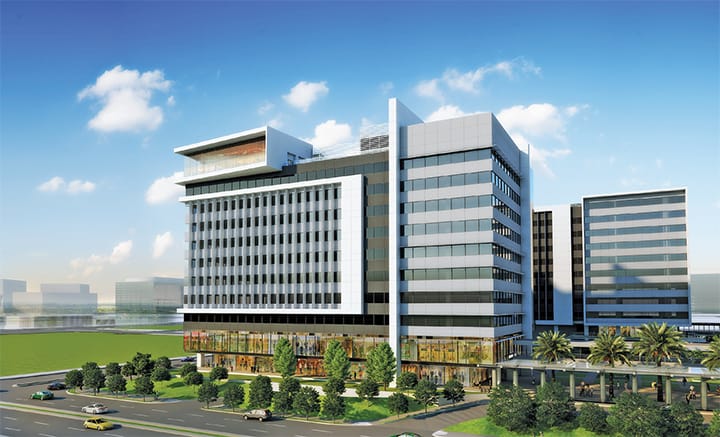In 1898, a tract of land located 100 kilometers north of Manila was used as a U.S. military camp for the 5th Cavalry after the Spanish-American War. It was later named Clark Field in 1918 after pre-World War 1 pilot Major Harold M. Clark who led the construction of its runways.
The base held strategic significance during World War II as an airfield used by both the US and Japanese forces as a base for East Asia operations, with its valuable location further recognized post-war as it became the largest U.S. military air base outside the United States. During the Vietnam War which lasted from 1955 to 1975, Clark Air Base was used as a strategic supply base and fighter-squadron installation by the US.
The Mt. Pinatubo eruption in June 1991 covered the entire area with volcanic ash, and the US government withdrew its forces and equipment. From under the rubble, the Philippine government built a Freeport and Special Economic Zone on the site. This has since grown under the BCDA (Bases Conversion and Development Authority) into New Clark City, a thriving hub with an eye towards sustainability. The strategic location that was valued as a military resource has become an attraction for foreign investors who are building their presence not only in the Philippines but also in the rest of Southeast Asia.
Modernized facilities
BCDA President Vince Dizon cites that the exports out of Clark was at $6.8 billion, the highest ever in one year. In 2020, despite the pandemic, it had exports of $6.7 billion. He projects even bigger growth with the completion of the Clark Airport, which is expected to triple its capacity from four million passengers to 12 million once travel opens again. The airport, which is set to open in July, will feature contactless solutions for its passengers that include self-service kiosks and self-service bag drops.
Global logistics company FedEx is set to open a $30 Million, 17,000 sqm gateway facility at Clark also by July. The state-of-the-art cargo facility is part of their ongoing Asia Pacific expansion, and will provide employment to about 800 workers in order to process about 9,000 documents and parcels per hour, aided by a 24/7 customs clearance operation.
At the core of the development is well-planned infrastructure and transport services. Dizon says Clark is shaping up to become a model of effective urban planning, with open spaces, multi-use facilities, efficient public transport for employees, and even a designated bike lane all taken into account into the sprawling complex. It will avoid the congestion found in Metro Manila’s urban areas, which, along with state-of-the-art testing and isolation facilities, has helped its communities and outlying areas mitigate the impact of Covid-19.
Attracting investors
One of the factors why US businesses have been attracted to Clark is the historical ties and the name recall for many of the American decision makers. Dennis Wright, Founding Director of the US-Philippines Society and Founder, Past President, and Chief Executive of Peregrine International explains, “The History of Clark, and its sister freeport in Subic, are deeply rooted in the American psyche, recognizing that for nine decades they were the two largest military bases outside of the U.S. So, first and foremost, Clark has ‘brand name’ recognition to most American entities.”
Today, he adds, Clark has become a haven for many American businesses which were quick to take advantage of the Clark Freeport special economic incentives. “The first American company to see the wisdom of establishing a presence on Clark was PhilExcel in 1993 at the behest of President Ramos. Later, in 1996, its sister, BerthaPhil, established additional business parks within Clark. Clearly, the giant among American giants today is Texas Instruments with its foray into Clark in 2009, now exporting over a billion dollars a year of electronic components. Sutherland, one of the largest BPO operators in the U.S. also has a large presence as do the logistic giants, FedEx and UPS. Hailing from Lombard, Illinois, is Viskase, a unique manufacturer and one of the preeminent suppliers of processed meat casings. Today, over 1,000 locators, mostly international investors, call Clark home.”
Wright’s keen interest and enthusiasm in the area is also on a personal basis, as his company was involved in Clark’s development. “In 2008, I conceived the development of the largest foreign real estate project in the Philippines, Global Gateway Logistics City. For seven years, my company led the development of this 177-hectare business park where I coined the term, ‘Clark Is It’.”
He acknowledges that American businesses are attracted to Clark in part because of the economic incentives offered, he says. However, there is much more to it. “Clark offers tremendous access to an integrated, multi-modal transportation system which includes easy access to arguably the best international airport in the country at Clark. It also has convenient access to two deep-water container ports in Subic, just 45 minutes away, as well as Manila, now just 90 minutes with the opening of the new SCTEX-NLEX connector expressway. Clark also is close enough to Metro-Manila for easy access, yet far enough away to avoid the congestion and higher cost of living. It has an abundant, motivated and well-educated labor pool with a high quality of life including easy access to the beaches of Zambales, the mountain retreats in Baguio with plenty of gold, leisure and residential communities to choose from.”
Current business climate
PhilExcel is one of Clark’s major locators. It is a professionally managed industrial park operating with international standards, specializing in assisting small to medium size enterprises to establish their operations inside Clark Freeport. “We are the gateway to Clark Freeport with 51 hectares of business park located along the main highway of Clark. We offer ready-to-occupy buildings and custom built structures for lease at significant value for money. Availability of buildings is diverse from office space to industrial buildings,” says General Manager Ian Packham.
He notes that inside Clark it is relatively straight-forward to set up, as 100% foreign ownership is allowed. He also has high regard for the workforce for being friendly and family oriented. “They are more loyal to their employer and less likely to hop from company to company to further their career.” His next goal is to rebuild a team to move onto the next level of development, having had to cut back during the pandemic.
Much is expected from Clark, as a model of being a resilient modernized city that can be replicated in other areas of the country. Dizon says that with the attention that is given to infrastructure and sustainability, it is envisioned to offer Filipinos a higher quality of life, where they can live, work, and play with their families.







